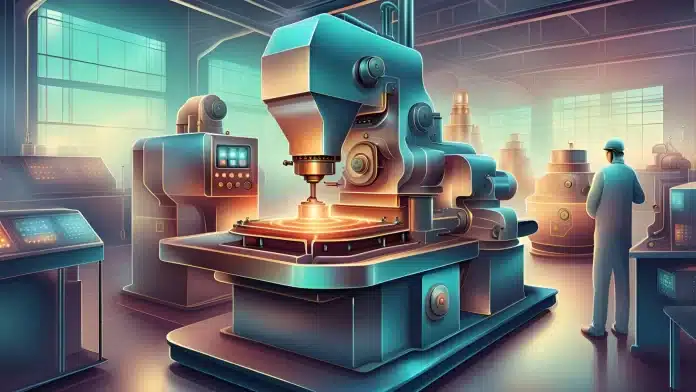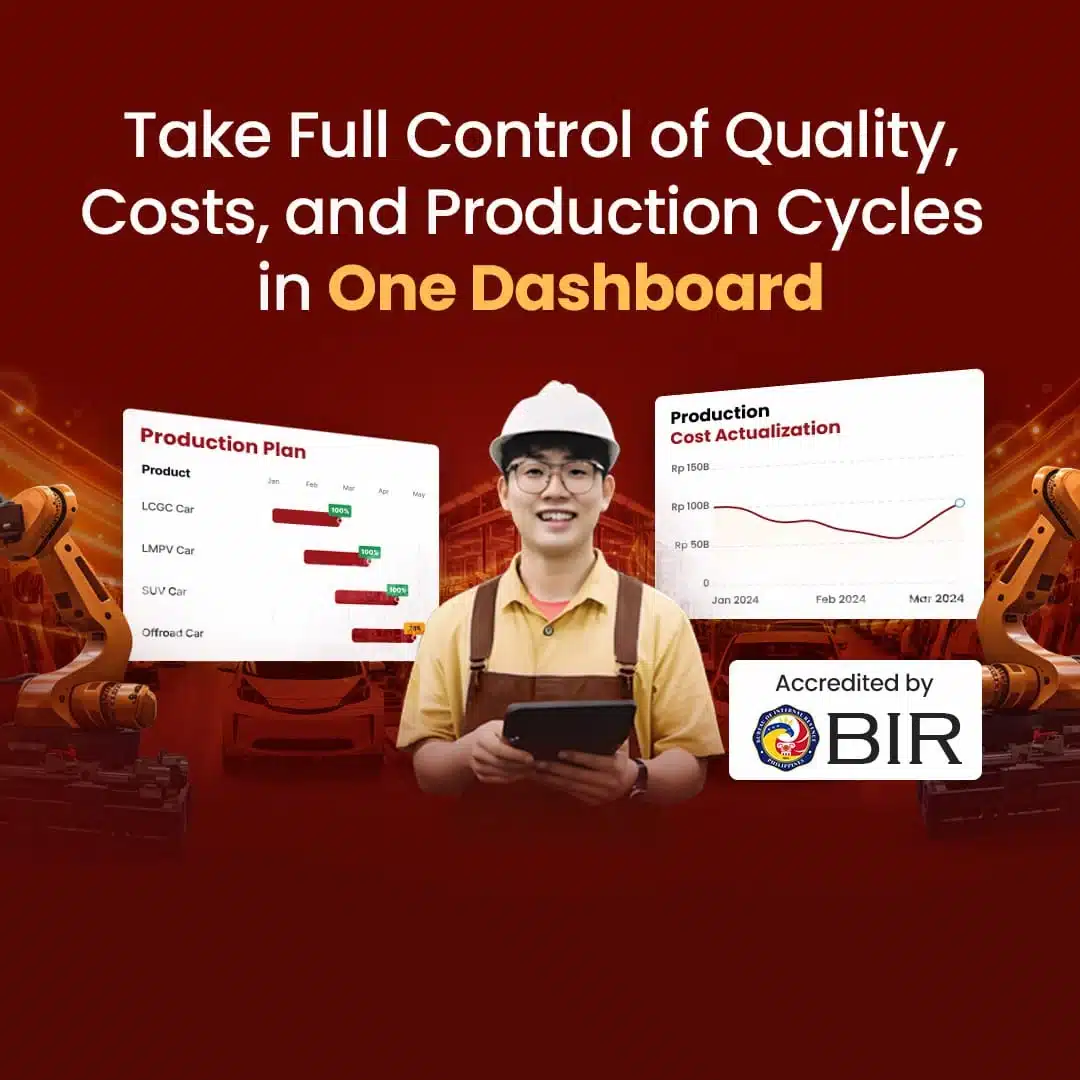When buying manufactured goods, you may see the term “OEM” (Original Equipment Manufacturer), which refers to a company that produces key components used in other businesses’ products.
Today, OEMs are important in improving product quality and operational efficiency in various industries. However, managing OEM sourcing can be complicated without the right tools.
HashMicro’s E-Procurement system simplifies this process with automation, real-time tracking, and cost optimization to ensure smooth supplier management.
Gusto mo bang mapadali ang iyong procurement process at mapataas ang kahusayan ng iyong negosyo? Alamin kung paano mapapaganda ng HashMicro ang iyong OEM procurement—magbasa pa!
Table of Content
Content Lists
Key Takeaways
|
What is an OEM (Original Equipment Manufacturer)?
An Original Equipment Manufacturer (OEM) is a business that creates parts or components for other companies, which are then integrated into their own products to enhance value. This type of manufacturing focuses on business-to-business transactions. The original producer of a product or system is the OEM, while the companies that purchase and integrate these components, often known as Value-Added Resellers (VARs), incorporate these OEM parts to add further value to their own products.
Historically, original equipment manufacturer were the first to produce key components necessary to manufacture a complete product. Companies that purchase these core components use them to create similar products as the OEM, although the end products are rebranded, often with distinct packaging and brand identities.
OEMs today are prevalent across many industries, including automotive, technology, food service, and fashion. Using OEM products can significantly reduce operational costs, accelerate production timelines, and enhance the quality of final goods.
Key Characteristics of an Original Equipment Manufacturer
Original Equipment Manufacturers (OEMs) are defined by distinct characteristics that set them apart in the production and licensing process. Here are two essential features of OEMs to consider:
1. Licensing for resale
A primary characteristic of OEMs is their licensing approach. OEMs, as licensors, sell licenses to other companies, allowing them to integrate and market the OEM’s product or component as part of their own offerings. These licenses are often bundled with hardware or software products and are commonly sold to Value-Added Resellers (VARs), who then market the finished goods to consumers.
2. Limited components
Another defining trait of OEM products is the typically limited or incomplete set of parts. OEMs often sell products without additional components such as cables or adapters. For instance, an OEM hard drive may come without necessary connectors, as VARs or other buyers generally procure these supplementary parts separately to meet their specific bulk purchasing requirements.
Advantages of Buying OEM Products
Purchasing Original Equipment Manufacturer products provides unique benefits that are often unmatched by other product types. Here are three main reasons why buying OEM parts or products can be a strategic choice:
1. Superior quality
OEM products are renowned for their high quality, often surpassing aftermarket alternatives. These products undergo stringent industry testing to ensure they meet specific standards, resulting in excellent fit, functionality, and reliability. The rigorous quality checks contribute to the higher price of OEM products, reflecting the value of their certified quality.
2. Enhanced durability
With their robust quality, OEM products are designed for greater durability. OEM suppliers often provide estimates on replacement timelines, allowing you to plan maintenance and replacements effectively. This durability ensures that OEM parts can withstand long-term use without frequent replacements, making them a reliable choice for businesses aiming for longevity.
3. Extended lifespan
Another key advantage of OEM products is their extended lifespan. Due to the quality materials and manufacturing processes, OEM parts are built to last. This longer life means you can count on OEM products for sustained use, maximizing their value and supporting long-term operational stability.
Original Equipment Manufacturer vs. Aftermarket: Choosing the Right Option
When deciding between original equipment manufacturer and aftermarket parts, it’s essential to weigh the pros and cons of each option. OEM parts are generally a safer choice for enhancing the value and reliability of your products. Known for their high quality, exceptional durability, and extended lifespan, OEM parts are designed to meet specific standards and often come with a warranty.
This warranty protects your investment if any issues arise, and OEM parts can be customized to align with the quality of products you deliver to customers. However, this quality assurance often means OEM parts are priced higher than aftermarket alternatives.
On the other hand, if your priority is to reduce company expenses, aftermarket products can be an appealing alternative. These parts are typically less costly than OEM components since they are not specifically manufactured for integration into VAR products.
While aftermarket products are budget-friendly, they may lack the customization and durability guarantees that come with OEM parts.
Difference Between OEM and ODM Companies
An Original Design Manufacturer (ODM) shares similarities with an Original Equipment Manufacturer (OEM) in that both produce parts or products for integration into other companies’ final products.
However, the key distinction lies in design responsibilities. ODMs not only manufacture but also design the products, offering more comprehensive solutions focused on design and innovation.
As OEM capabilities have evolved, many have shifted towards an ODM model to cater to demand for distinctive, innovative products. With ODMs, companies can develop unique, high-quality products that stand out in the market and attract consumers through brand-specific designs.
Examples of Original Equipment Manufacturers
OEM examples can generally be categorized into hardware and software products.
Hardware OEMs: These products offer the same capabilities and performance as their retail versions but often come without additional components. For instance, purchasing an OEM computer processor typically does not include extra parts like a fan, which retail versions may offer.
OEM hardware is sold in limited quantities and may come with fewer accessories, designed for businesses that prefer bulk purchasing without the added retail packaging.
Software OEMs: In software, OEMs often license their software for integration into another company’s systems or applications. The licensed software becomes part of the larger system, enhancing functionality and adding value to the end product.
Common examples of OEM software include ERP for manufacturing system licenses and Supply Chain Management software. For companies looking to increase productivity, improve operational functionality, and streamline workflows, HashMicro’s ERP software offers an effective OEM solution that can be seamlessly integrated into your enterprise systems.
Conclusion
Traditionally, an original equipment manufacturer meaning as a company whose products will be used by other companies. They will use Original equipment manufacturer products as components in their products. The inherent characteristic of OEMs is selling incomplete licenses and parts. Buying an OEM product can provide tremendous benefits, such as high quality, long durability, and longer life.
You can use the Hash Manufacturing System to support your business processes in one integrated system. HashMicro provides the best solution for you to increase the productivity and profitability of your manufacturing business with the complete manufacturing management software.
Contact us now to get the best offer and free demo!
FAQ About OEM
-
What is the primary difference between OEM and ODM?
The primary difference is in design responsibility. An OEM manufactures products that another company integrates, while an ODM handles both the design and manufacturing, allowing companies to release unique, brand-specific products.
-
Are OEM products better than aftermarket products?
OEM products generally offer higher quality, longer durability, and warranties, making them a more reliable but often more expensive choice compared to aftermarket products.
-
How does an OEM software license work?
OEM software licenses allow companies to integrate licensed software into their systems or applications, adding functionality and streamlining operations with a trusted solution.
-
Can HashMicro’s ERP software be used as an OEM solution?
Yes, HashMicro’s ERP software can be integrated as an OEM solution, enhancing productivity, functionality, and efficiency within enterprise systems.
-
Why do OEM hardware products lack additional components?
OEM hardware products are usually sold without extra components, like fans or cables, because they are intended for bulk purchasing by companies that can secure necessary accessories separately.
{
“@context”: “https://schema.org”,
“@type”: “FAQPage”,
“mainEntity”: [{
“@type”: “Question”,
“name”: “What is the primary difference between OEM and ODM?”,
“acceptedAnswer”: {
“@type”: “Answer”,
“text”: “The primary difference is in design responsibility. An OEM manufactures products that another company integrates, while an ODM handles both the design and manufacturing, allowing companies to release unique, brand-specific products.”
}
},{
“@type”: “Question”,
“name”: “Are OEM products better than aftermarket products?”,
“acceptedAnswer”: {
“@type”: “Answer”,
“text”: “Several software options are available for payroll management, each catering to different business sizes and needs. Some of the most popular payroll management systems include:– HashMicro
– SAP SuccessFactors
– ZenefitsThese systems offer features like automated payroll processing, tax filing, direct deposit, OEM products generally offer higher quality, longer durability, and warranties, making them a more reliable but often more expensive choice compared to aftermarket products.”
}
},{
“@type”: “Question”,
“name”: “Why do OEM hardware products lack additional components?”,
“acceptedAnswer”: {
“@type”: “Answer”,
“text”: “OEM hardware products are usually sold without extra components, like fans or cables, because they are intended for bulk purchasing by companies that can secure necessary accessories separately
– Disbursing Payments: Facilitates timely payment to employees through checks, direct deposits, or other payment methods.
– Compliance Management: Ensures adherence to federal, state, and local tax laws and labor regulations, reducing the risk of legal penalties.”
}
},{
“@type”: “Question”,
“name”: “How does an OEM software license work?”,
“acceptedAnswer”: {
“@type”: “Answer”,
“text”: “OEM software licenses allow companies to integrate licensed software into their systems or applications, adding functionality and streamlining operations with a trusted solution.”
}
},{
“@type”: “Question”,
“name”: “Can HashMicro’s ERP software be used as an OEM solution?”,
“acceptedAnswer”: {
“@type”: “Answer”,
“text”: “Yes, HashMicro’s ERP software can be integrated as an OEM solution, enhancing productivity, functionality, and efficiency within enterprise systems.”
}
}]
}





































